Do you have a question about the Sharp LC-26SH330E and is the answer not in the manual?
A greeting and thank you message for purchasing the product.
Crucial safety guidelines for using the TV to prevent hazards.
Instructions for safely moving the television to avoid damage.
Guidance on how to securely mount the TV on a wall.
Details on the functions and usage of the remote control.
Identification of controls and indicators on the front of the TV.
Identification of all input/output terminals on the rear of the TV.
Lists all items included in the TV package.
Step-by-step instructions for attaching the TV stand.
Specifies VESA compatibility and screw types for wall mounting.
Guide for correctly inserting batteries into the remote control.
Instructions on how to operate the TV using the remote control.
A step-by-step guide for the first-time setup and channel tuning.
Basic daily use of the TV, including power and channel changes.
How to choose the input source for connected devices.
Instructions for controlling the TV using its physical buttons.
How to use the on-screen guide for digital TV programmes.
Information on accessing and using the Teletext service for information.
Steps to activate and deactivate the Teletext display.
How to choose the preferred language for Teletext display.
Details on using the MHEG5 interactive application for DTV.
Settings for adjusting picture quality and visual display parameters.
Detailed guide to modify brightness, contrast, colour, and sharpness.
How to select predefined picture presets for convenience.
Settings for adjusting audio output and sound modes.
Guide to modify equalizer, balance, and digital audio output.
How to select predefined sound modes like Music or Speech.
Settings related to channel tuning, scanning, and audio languages.
How to choose the audio track for digital channels.
Procedures for scanning and storing available TV channels.
How to update the channel list without erasing existing ones.
Checking digital channel quality and signal strength.
Manually searching and storing analogue TV channels.
Allocating favourite channels to the top of the channel list.
Skipping unwanted channels during channel selection.
Reordering channels in the channel list.
Modifying channel numbers or names.
Assigning TV channels for decoding via SCART.
Manually adjusting analogue channel frequency for better reception.
Removing all stored channels from the list.
Settings for menu language, aspect ratio, and picture format.
Changing the language displayed in the TV menu.
Setting the aspect ratio behaviour for 4:3 content.
Adjusting the display format (e.g., Wide, Zoom) for various content.
Settings for time zone, clock, and sleep timer functions.
Selecting the local time zone for accurate time display.
Manually setting the current time on the TV.
Setting the TV to turn off automatically after a specified time.
Setting specific signal types for the SCART terminal.
Enabling and configuring subtitles for TV channels.
Options for displaying subtitles on analogue channels.
Setting the TV to enter standby mode after a defined period.
Choosing a subtitle language for digital broadcasts.
Enabling subtitles for hearing-impaired viewers.
Selecting the display language for Teletext pages.
Information on using the CI slot for encrypted services.
Adjusting picture size for HDMI input to prevent video loss.
Updating the TV's software via Over Air Download.
Setting the TV to automatically standby when no signal is detected.
Setting the TV to automatically standby after a period of inactivity.
Restoring the TV to its factory default settings.
Configuration for DivX video playback and registration.
Displaying the current software version of the TV.
Controls for blocking content and setting parental restrictions.
Preventing children from accessing specific TV channels.
Restricting TV usage based on specific time intervals.
Setting TV to display programmes based on age ratings.
Disabling specific external input signals.
Options to set or modify the parental control password.
Resetting all parental control configurations.
Enabling energy-saving features to reduce power consumption.
Overview of using USB devices for media playback and storage.
Steps to connect a USB device and access its content.
How to browse and view photo files from a USB device.
How to play music files from a USB storage device.
How to play video files from a USB storage device.
Information on supported USB devices, file systems, and formats.
General advice before connecting external devices to the TV.
How to connect devices via HDMI for high-quality digital audio/video.
Connecting devices using component video for accurate colour reproduction.
Connecting devices using SCART cables for various signal types.
Instructions for installing a Smartcard into the CI slot for digital services.
How to view information and status of the CA module.
Connecting external audio systems for enhanced sound.
How to connect a computer to the TV for display.
Connecting a PC using HDMI or DVI for digital display.
Connecting a PC using VGA for analogue display.
Solutions for common problems encountered with the TV.
Technical details and specifications of the TV models.
Information on power consumption and energy efficiency.
General notes and information regarding TV usage and care.
Guidelines for disposing of the TV and batteries responsibly.
Procedures for business users to discard the TV and batteries.
A greeting and thank you message for purchasing the product.
Crucial safety guidelines for using the TV to prevent hazards.
Instructions for safely moving the television to avoid damage.
Guidance on how to securely mount the TV on a wall.
Details on the functions and usage of the remote control.
Identification of controls and indicators on the front of the TV.
Identification of all input/output terminals on the rear of the TV.
Lists all items included in the TV package.
Step-by-step instructions for attaching the TV stand.
Specifies VESA compatibility and screw types for wall mounting.
Guide for correctly inserting batteries into the remote control.
Instructions on how to operate the TV using the remote control.
A step-by-step guide for the first-time setup and channel tuning.
Basic daily use of the TV, including power and channel changes.
How to choose the input source for connected devices.
Instructions for controlling the TV using its physical buttons.
How to use the on-screen guide for digital TV programmes.
Information on accessing and using the Teletext service for information.
Steps to activate and deactivate the Teletext display.
How to choose the preferred language for Teletext display.
Details on using the MHEG5 interactive application for DTV.
Settings for adjusting picture quality and visual display parameters.
Detailed guide to modify brightness, contrast, colour, and sharpness.
How to select predefined picture presets for convenience.
Settings for adjusting audio output and sound modes.
Guide to modify equalizer, balance, and digital audio output.
How to select predefined sound modes like Music or Speech.
Settings related to channel tuning, scanning, and audio languages.
How to choose the audio track for digital channels.
Procedures for scanning and storing available TV channels.
How to update the channel list without erasing existing ones.
Checking digital channel quality and signal strength.
Manually searching and storing analogue TV channels.
Allocating favourite channels to the top of the channel list.
Skipping unwanted channels during channel selection.
Reordering channels in the channel list.
Modifying channel numbers or names.
Assigning TV channels for decoding via SCART.
Manually adjusting analogue channel frequency for better reception.
Removing all stored channels from the list.
Settings for menu language, aspect ratio, and picture format.
Changing the language displayed in the TV menu.
Setting the aspect ratio behaviour for 4:3 content.
Adjusting the display format (e.g., Wide, Zoom) for various content.
Settings for time zone, clock, and sleep timer functions.
Selecting the local time zone for accurate time display.
Manually setting the current time on the TV.
Setting the TV to turn off automatically after a specified time.
Setting specific signal types for the SCART terminal.
Enabling and configuring subtitles for TV channels.
Options for displaying subtitles on analogue channels.
Setting the TV to enter standby mode after a defined period.
Choosing a subtitle language for digital broadcasts.
Enabling subtitles for hearing-impaired viewers.
Selecting the display language for Teletext pages.
Information on using the CI slot for encrypted services.
Adjusting picture size for HDMI input to prevent video loss.
Updating the TV's software via Over Air Download.
Setting the TV to automatically standby when no signal is detected.
Setting the TV to automatically standby after a period of inactivity.
Restoring the TV to its factory default settings.
Configuration for DivX video playback and registration.
Displaying the current software version of the TV.
Controls for blocking content and setting parental restrictions.
Preventing children from accessing specific TV channels.
Restricting TV usage based on specific time intervals.
Setting TV to display programmes based on age ratings.
Disabling specific external input signals.
Options to set or modify the parental control password.
Resetting all parental control configurations.
Enabling energy-saving features to reduce power consumption.
Overview of using USB devices for media playback and storage.
Steps to connect a USB device and access its content.
How to browse and view photo files from a USB device.
How to play music files from a USB storage device.
How to play video files from a USB storage device.
Information on supported USB devices, file systems, and formats.
General advice before connecting external devices to the TV.
How to connect devices via HDMI for high-quality digital audio/video.
Connecting devices using component video for accurate colour reproduction.
Connecting devices using SCART cables for various signal types.
Instructions for installing a Smartcard into the CI slot for digital services.
How to view information and status of the CA module.
Connecting external audio systems for enhanced sound.
How to connect a computer to the TV for display.
Connecting a PC using HDMI or DVI for digital display.
Connecting a PC using VGA for analogue display.
Solutions for common problems encountered with the TV.
Technical details and specifications of the TV models.
Information on power consumption and energy efficiency.
General notes and information regarding TV usage and care.
Guidelines for disposing of the TV and batteries responsibly.
Procedures for business users to discard the TV and batteries.
| Child lock | No |
|---|---|
| Teletext function | Yes |
| Audio formats supported | AAC |
| Video formats supported | DIVX, MPEG4 |
| Number of AV connections | 1 |
| Response time | 6.5 ms |
| Display diagonal | 26 \ |
| Display brightness | 450 cd/m² |
| Display resolution | 1366 x 768 pixels |
| Display technology | LCD |
| Native aspect ratio | 16:9 |
| Supported graphics resolutions | 1366 x 768 |
| HDMI version | 1.3 |
| Audio (L/R) in | 0 |
| USB 2.0 ports quantity | USB 2.0 ports have a data transmission speed of 480 Mbps, and are backwards compatible with USB 1.1 ports. You can connect all kinds of peripheral devices to them. |
| Product color | Black |
| Panel mounting interface | 200 x 100 mm |
| Remote control type | GL220 |
| Power consumption (standby) | 0.18 W |
| Power consumption (typical) | 55 W |
| RMS rated power | 10 W |
| Tuner type | Analog & digital |
| Analog signal format system | NTSC, PAL, SECAM |
| Digital signal format system | DVB-C, DVB-T |
| Depth (with stand) | 239.8 mm |
|---|---|
| Width (with stand) | 657.8 mm |
| Height (with stand) | 491.1 mm |
| Weight (with stand) | 8300 g |
| Depth (without stand) | 91.6 mm |
| Height (without stand) | 448.4 mm |


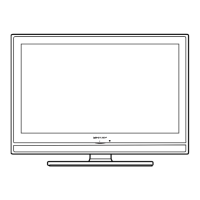
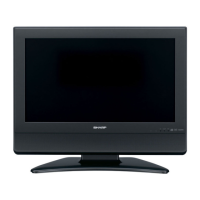

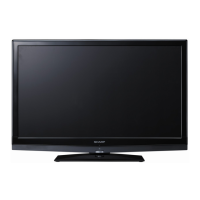
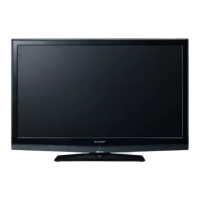


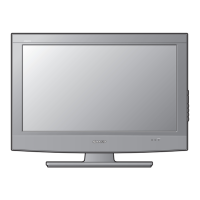
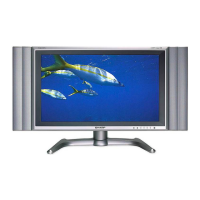
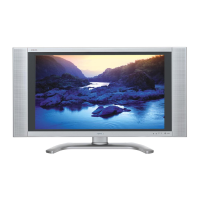
